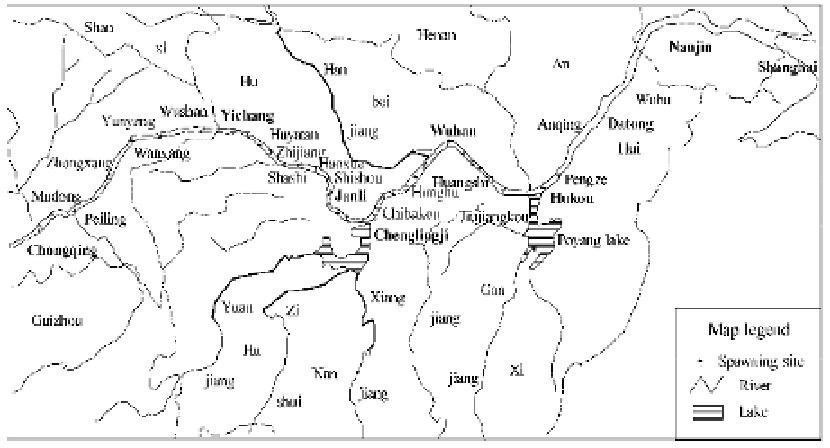Environmental Engineering Reference
In-Depth Information
wastewater before discharge into the river. At a press conference on June 5, 2003, the State Environment
Protection Bureau reported that the impoundment of the TGP Reservoir would not obviously affect the
water quality. The water quality in the reservoir is mostly still in Grade III in the Chinese water quality
standards. Only in some places, the content of bacilli is high. A pollution control project was launched
in 2002. All wastewater and sewage water will be treated after the completion of the project (Chinese
Hydroweb, 2003).
Thermal stratification in the reservoir begins around April and ends in May. The water released from
the bottom outlets in this period is colder than that before the dam, which may cause a 20 day delay in
the temperature of downstream water rising to the spawning temperature of 18
ć
. On the other hand, the
regulated flow is of benefit for control of snail fever. The area downstream of the dam, especially Tongting
Lake and surrounding areas, has suffered from an infectious disease know as snail fever for which
oncomelania
is the intermediate host for a long time. With the impoundment of the reservoir, the artificial
fluctuation of water levels makes it hard for such snails to breed. In addition, the alleviation of flooding
along the river's middle and lower reaches makes it easier to eliminate the snails in swamp areas.
7.4.3.5
Fishes and Fishery
There are more than 300 fish species in the middle and lower Yangtze River, including catfish, bleak, and
carp. After the impoundment, the freshwater fishes that thrive in rapids have to move upstream to find
new habitats. The expanded water surface of the reservoir creates better conditions for aquatic farming in
the river and its tributaries. The spawning grounds located in the reservoir section are inundated in part
or in whole. The farm breeding of fishes has to be moved to the uppermost end of the reservoir or even
farther.
There are four species of carp in the Yangtze River that have the most importance to the fresh water
fishery. They are the black carp (Mylopharyngodon piceus), the grass carp (Ctenop haryngodon idellus),
the silver carp (Hypophthal michthys molitrix), and the big-head carp (Aristichyths nobilis). Figure 7.46
shows 28 major spawning sites of the four carp species in the Yangtze River. Seven spawning sites have
been inundated by the impoundment and the rest are affected by the regulated flow. Flood and stage rise
are the main signals for the species to spawn (Yi and Liang, 1964).
Fig. 7.46
Spawning sites of the four major Chinese carp species in the Yangtze River


Search WWH ::

Custom Search